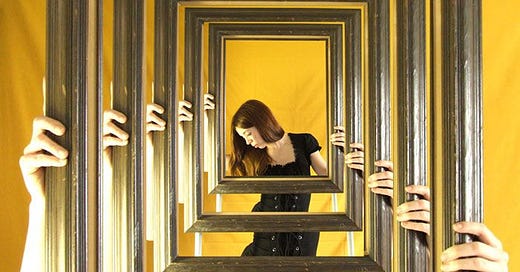Why the Human Mind Is Not Just an Illusion
How the Infinity Mirror Reveals the Flaws in Illusion Theory
Sitting in a room with a group of thoughtful listeners, I noticed their serious expressions as they tuned into a podcast featuring neuroscientist Sam Harris. He claimed that our thoughts are illusions and that free will doesn't truly exist. Harris shared similar views in his 2012 book Free Will, echoing what Francis Crick also proposed in The Astonishing Hypothesis.
It’s not only scientists making these assertions. In popular media too, similar ideas surface. For example, in Naruto, a character says, “Every single one of us goes through life depending on and bound by our individual knowledge and awareness. And we call it reality. However, both knowledge and awareness are equivocal. One’s reality might be another’s illusion.”
But are these ideas truly convincing? Is there a way to test them?
Most people who believe in the reality of their thoughts and the existence of free will respond with reasoned arguments drawn from logic and common sense. But beyond philosophy, there’s a simple physical demonstration that highlights a deep contradiction in illusion theory. This is known as the infinity mirror.
The Infinity Mirror Experiment
Place two mirrors facing each other so that you can stand between them. When you look into one mirror, you’ll see yourself reflected. Then you’ll see a chain of repeated reflections stretching into the distance. That endless sequence happens because each mirror bounces light back and forth, creating smaller and dimmer reflections over and over.
This optical effect happens because mirrors do not reflect all light perfectly; some light is lost at each reflection, making the distant images degrade.
If you accept the laws of physics and believe human perception offers a mostly accurate reading of external reality, this mirror effect makes complete sense. It is expected, explainable, and repeatable.
But if thoughts and perception are purely illusions, this simple experiment becomes problematic.
Where Illusion Theory Breaks Down
If every thought and perception is an illusion, then even seeing your own face in the first mirror must be considered unreal. Following this logic, all the reflections—whether the first or the hundredth are nothing more than illusions too. They don’t exist. Yet, you and I can both see them.
When you raise your hand, you notice that the motion is mirrored and echoed through the reflections. According to illusion theory, these consistent visual outcomes are just illusions without any basis in reality.
But illusion theory doesn’t offer any framework to explain or predict these results. It lacks rules to forecast what any given illusion will look like. It can't account for the shrinking and fading of reflections, the reversal of images in alternating steps, or why every person who stands between the mirrors observes the same sequence.
Illusion theory also doesn’t explain reproducibility. If illusions are personal, there’s no reason you should witness the same thing every time you repeat the experiment. Nor can it explain how another observer sees the exact same result when viewing the experiment or even a photograph of it.
The Uninvolved Viewer Test
Now imagine showing a photo of the infinity mirror setup to someone who wasn’t there. That person also reports seeing the same endless reflection pattern.
According to illusion theory, which claims perceptions are individual and not tied to physical reality, there is no reason why that third person should see the same illusions. Yet, they do.
If these mirror reflections were just mental fabrications, how would this viewer who wasn't even present perceive them in the same way?
Illusion theory doesn’t have a consistent model to account for shared perception or consistent visual phenomena. But physical laws do. Physics clearly explains how mirrors behave, how light reflects, and why each successive image fades with distance. It also explains why these results are predictable and why everyone sees the same thing.
Final Thoughts
When someone claims, “Your thoughts are just illusions,” try responding with a simple question: “How does illusion theory explain infinity mirrors?”
If thoughts are illusions, how do we account for the shared, measurable, and reproducible phenomena created by mirrors? How can we explain photographs that capture these illusions and are interpreted the same way by different people?
These questions reveal a deep flaw in illusion theory. Without a way to explain how these visual experiences are created and shared, the idea that thoughts are mere illusions begins to collapse. The infinity mirror offers a simple but powerful reminder: some things we see and think are real.





